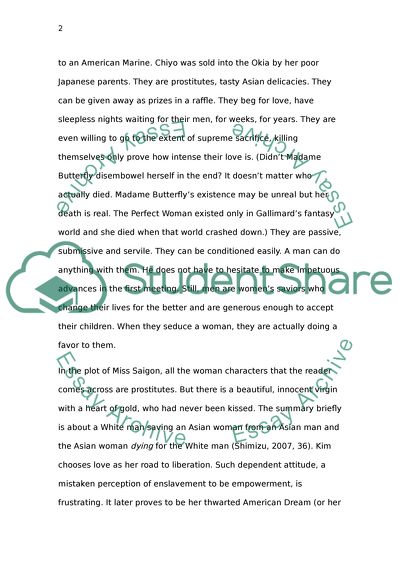Cite this document
(The Role of the Woman within M. Butterfly, Miss Saigon and Memoirs of Book Report/Review, n.d.)
The Role of the Woman within M. Butterfly, Miss Saigon and Memoirs of Book Report/Review. https://studentshare.org/literature/1566643-the-role-of-the-woman-within-m-butterfly-miss-saigon-and-memoirs-of-a-geisha
The Role of the Woman within M. Butterfly, Miss Saigon and Memoirs of Book Report/Review. https://studentshare.org/literature/1566643-the-role-of-the-woman-within-m-butterfly-miss-saigon-and-memoirs-of-a-geisha
(The Role of the Woman Within M. Butterfly, Miss Saigon and Memoirs of Book Report/Review)
The Role of the Woman Within M. Butterfly, Miss Saigon and Memoirs of Book Report/Review. https://studentshare.org/literature/1566643-the-role-of-the-woman-within-m-butterfly-miss-saigon-and-memoirs-of-a-geisha.
The Role of the Woman Within M. Butterfly, Miss Saigon and Memoirs of Book Report/Review. https://studentshare.org/literature/1566643-the-role-of-the-woman-within-m-butterfly-miss-saigon-and-memoirs-of-a-geisha.
“The Role of the Woman Within M. Butterfly, Miss Saigon and Memoirs of Book Report/Review”. https://studentshare.org/literature/1566643-the-role-of-the-woman-within-m-butterfly-miss-saigon-and-memoirs-of-a-geisha.


